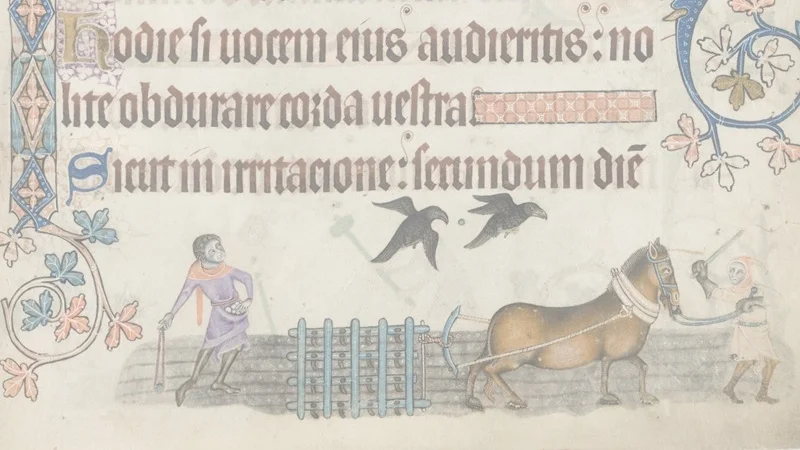Medieval Crop Yields Database
Men stacking sheaves, folio 173, Luttrell Psalter, provenance East Anglia c.1325-35 [British Library, Add. 42130]© British Library.
This is the single largest and most precise body of data on pre-modern grain harvests currently available internationally. The raw information comes from thousands of precisely dated manorial accounts preserved in many public and private archives in England and beyond which record in minute detail the cultivation of seigniorial demesnes. The accounts are hand written on parchment in abbreviated Latin using Roman numerals and state for each crop cultivated the quantities of grain seeded and harvested, sometimes including the medieval auditor’s own calculation of the rate at which the seed yielded (the yield per seed or yield ratio). The current database contains approximately 30,000 individual yield observations [see link above] which probably represent between two-thirds and three-quarters of all the observations potentially retrievable from the archives. The earliest information relates to the harvest of 1211 on the estates of the bishops of Winchester and the latest to that of 1491 on the estate of Battle Abbey. Chronological coverage is, however, most continuous and comprehensive for the 160-years 1270 to 1430, a period marking the transition from the Medieval Climatic Optimum to the Little Ice Age and punctuated by the worst crises of subsistence and public health (the Great Famine of 1315-21 and Black Death of 1347-50) in recorded English and European history.
The painstaking task of transcribing this information from the original documents and making and tabulating the relevant yield calculations has taken several historians — most notably Jan Titow, David Farmer, and Bruce Campbell [see “Sources”] — many years. Their hitherto separate and largely unpublished calculations are here combined into a single electronic database for the first time. The database is the creation of Bruce M. S. Campbell, Professor of Medieval Economic History within the School of Geography, Archaeology, and Palaeoecology at The Queen’s University of Belfast (QUB). Funding has been provided by the Economic and Social Research Council (ESRC) – grant RES-000-23-0645 — British Academy and Sussex Archaeological Society. Methodological advice has been provided by Professor Gregory Clark of the University of California at Davis and technical support by the Centre for Data Digitisation and Analysis, QUB. Copyright permission to release the unpublished yield calculations of the late David Farmer has been granted by the University of Saskatchewan Archives and to reproduce the published pre-1350 Winchester yields by Dr Jan Titow [see “Acknowledgements”].



